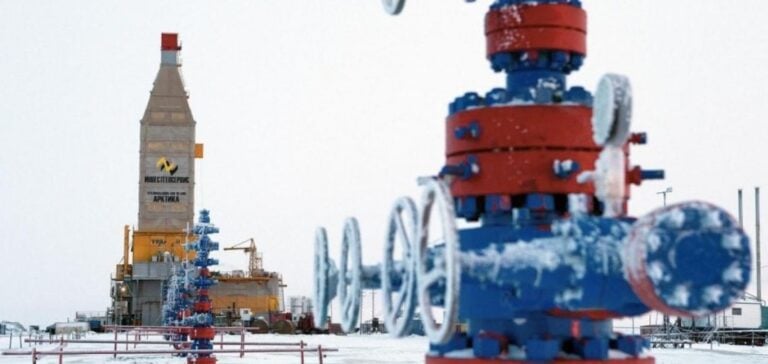Russian gas flows transiting through Ukraine to Europe continue normally despite uncertainties linked to the armed conflict in the Kursk region, near the Ukrainian border. According to the latest data from the Ukrainian operator GTSOU, the nominated volumes for November 11 at the Sudzha connection point are estimated at 42.2 million cubic meters.
Russian gas exports via this route have maintained an average close to 42 million cubic meters per day in 2024, although the conflict between Russia and Ukraine persists. This steady supply continues despite a military incursion by Ukraine in August into the Kursk region, a strategic area for gas transit.
Preparation of a Russian Counteroffensive
Recent reports, cited by the New York Times and corroborated by U.S. and Ukrainian sources, indicate that Russia and North Korea are mobilizing some 50,000 soldiers for a potential counteroffensive in this same Kursk region. This mobilization could jeopardize the flow of gas transiting to Europe, thereby increasing nervousness in European markets.
This concern is reflected in European gas prices, which are once again nearing their 2024 highs. The TTF month-ahead contract price, as assessed by Platts, reached 42.06 euros per megawatt-hour on November 8, compared to an annual high of 43.47 euros reached on October 25.
Expiration of the Russia-Ukraine Transit Contract
Concerns about tensions in the Kursk region add to uncertainties related to the imminent expiration of the five-year transit contract between Moscow and Kyiv, scheduled to end in late 2024. This contract, essential for the transit of Russian gas to Europe, might not be renewed, according to repeated statements from Ukrainian officials. Ukraine, represented by Naftogaz, reportedly has no intention of extending the current agreement.
In parallel, Azerbaijan could play a role in maintaining a flow of gas through Ukraine, with ongoing talks to facilitate this transit beyond 2024. However, these discussions remain uncertain, leaving doubt over the future of Russian gas exports via this route.
Reduction in Transit Volumes
The volume of Russian gas transiting through Ukraine has seen a significant decrease in recent years. While in 2008 it was still reaching 117 billion cubic meters, this figure fell to just 14.65 billion in 2023. Gazprom, the Russian gas giant, is contractually committed to sending up to 110 million cubic meters per day in 2024, totaling 40 billion for the year.
However, since May 2022, Gazprom’s actual flows to Ukraine have been below contractual volumes, due to financial and logistical disputes. At that time, Ukraine invoked force majeure to justify a partial interruption of gas flows at the Sokhranivka entry point, claiming to have lost operational control of this infrastructure in the conflict zone. In response, Gazprom limited its payments, only compensating for services actually rendered despite the ship-or-pay provisions in the contract.
Alternative Options and Consequences for the European Market
In light of ongoing tensions and flow limitations, Naftogaz has proposed that Gazprom transfer volumes transiting via Sokhranivka to Sudzha, a solution Gazprom has so far declined to implement. Before the force majeure, Sokhranivka allowed the transfer of 33 million cubic meters of Russian gas per day to Ukraine.
For Europe, these uncertainties add to the energy challenges of the winter. The maintenance of gas flows via Sudzha remains strategic, as European prices remain high and energy demand increases with the approach of the coldest months.






















